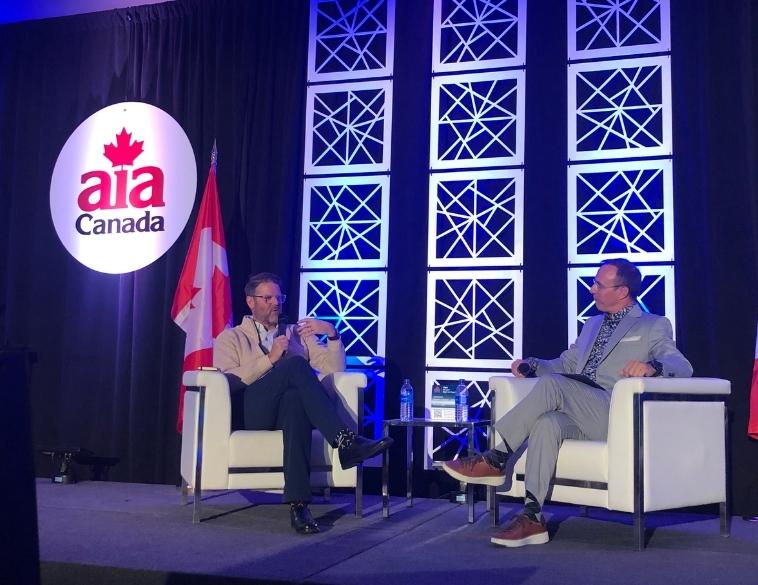Ideas and predictions on personal transportation and servicing in the future.
As part of the 2022 AIA Canada Annual General Meeting and Conference, May 10, saw a special Fireside Chat session with Jean-François Champagne, President of AIA Canada and Ted Graham, Innovation Strategist and Bestselling Author of The Uber of Everything: How the Freed Market Economy is Disrupting and Delighting.
The discussion focused on a range of key topics top of mind for the aftermarket and the entire automotive industry at present, including the Government of Canada’s mandates on electric vehicles, including 100% of new vehicles sold by 2035 be EVs.
Market demand matters
There is no question that while such political declarations grab attention, meeting such targets is going to prove challenging. For one, there’s the infrastructure question and two, that success in adopting any new technology or concept tends to rest on market demand and acceptance, not government regulations.
Ted Graham explained that it is very likely we will see a mixed propulsion vehicle fleet for some time, with conventional internal combustion engine vehicles, hybrids and pure electrics on our roads.
While some OEMs have announced a fully 100% commitment to electric vehicles by 2035 and there are signs that at least some of their customer base is enthusiastic about the transition, successful adoption will boil down to practicality, which includes the infrastructure that supports these vehicles.
Graham noted that for the aftermarket industry, paying close attention to EV infrastructure development will be critical in planning the future of the automotive parts and service repair sector. This includes government incentives for projects such as electrifying the Trans-Canada Highway as well as observing EV trends south of the border in the U.S.
Consumer buying patterns
There is a consensus that EV adoption (at least for the foreseeable future) will likely follow a pattern of having a two-vehicle family, one pure EV and one that’s either gasoline or diesel or a hybrid. How these buying and ownership patterns evolve will have a significant impact on aftermarket businesses that supply parts and provide servicing and maintenance on these vehicles.
There’s also the question of ensuring there is a pool of skilled labour available to fix and maintain these high-technology cars, SUVs and trucks.
One way to help combat future labour shortages is for the industry, including the aftermarket and OEMs, to take a more active role in educating the youth of today and tomorrow. Sponsorship programs, scholarships, and leveraging the power of technology to facilitate training and professional growth are just some of the options available. Even in the service bay itself, tools such as augmented reality for diagnostics can really prove a game-changer, demonstrating that service repair, is a highly advanced, exciting, dynamic and rewarding career.
Data and predictive maintenance were also discussed during the session—a topic that continues to gather interest, especially as automakers try to move forward on autonomous vehicle development. Data access is going to be key here and the automotive aftermarket has a critical role to play. Being able to regularly and consistently monitor a vehicle’s performance and maintenance requirements will help increase safety and efficiency of operation for consumers, as well as better help service providers with business strategy, revenue projections and customer retention. Additionally, as we’ve seen over the last decade, other industry stakeholders, including insurers can also have a role to play. By being able to analyze vehicle condition and maintenance through data access, they can pass on additional benefits to their customers, such as offering referred rates on insurance premiums.
Rapid shifts
If the COVID-19 pandemic has shown us anything, it is that future is often unpredictable. Alongside technology advancements, consumer expectations can change rapidly. Plus, given the fact that technology has proven over the last decade to potentially be a major disruptor to existing businesses and thought practices, the Fireside Chat concluded that one of the best ways industries like the aftermarket can continue to grow and prosper, is by keeping an open mind towards evolving trends whilst remaining laser-focused on the needs and requirements of their customers.



